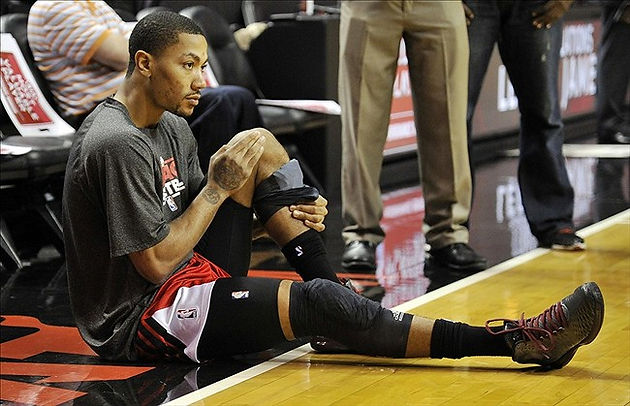- Physical Medicine Home
- Products
- Programs
- Applications
- Find a Clinic
- Blog
- Events
- Education & Training
- In The News
- Press Releases
Physical Medicine Blog
< back to resultsWhen Can I Return To Sport After ACL Surgery?
June 2, 2016
 This question is one that I get asked often by patients who are planning surgery after rupturing their ACL. Unfortunately for my patients, I don’t have an answer that makes them feel warm and fuzzy on the inside.
This question is one that I get asked often by patients who are planning surgery after rupturing their ACL. Unfortunately for my patients, I don’t have an answer that makes them feel warm and fuzzy on the inside.
My usual response is a long thoughtful sigh, followed by “How long is a piece of string?”. I also follow that up with the sobering statistic that 80% of ACL reconstruction (ACLR) patients return to some form of sport, 65% return to the same sporting level and only 55% return to sport at a competitive level within 1-2 YEARS post ACLR (reference).
I know these two things aren’t what they wanted to hear, and I'm fairly certain they wanted me to say something along the lines of, “Everything is going to be fine. You’ll have a perfect rehab, and you’ll be back playing sports within 9 months”. The problem with me saying that though is that I would be lying straight to their face, and I wouldn’t be able to sleep well at night.
Unfortunately for those who are not professional athletes, the return to sport (RTS) path after ACLR is very unpredictable. There are so many ebbs and flows, and twists and turns, that it is almost impossible to predict. The main reasons for this is that the rehab program is bloody hard work and life gets in the road.
For the professional athlete however, the RTS path is a little bit more predictable, and you'll find that a high percentage of them will be back training and playing sport within 8-12 months. There are many reasons for this, with the main reasons being they get paid to do their rehab, they have a large team of medical services at their disposal, there are external pressures from a number of different stakeholders to RTS as soon as possible, and they are more likely to be much fitter and stronger than most of the age-matched general population.
What is becoming clear however, in regards to predicting a safe and successful RTS, is that recent research is indicating that the decision to RTS should be based on meeting key performance criteria, rather than allowing the player to RTS based on time-frames alone, or getting cleared to play from the orthopedic surgeon based on a series of static clinical tests.
The results of two recent studies looking at ACL reinjury rates have been summarised below…
| Grindem et al (2016) |
-
They looked at 106 competitive athletes who recently had ACLR surgery and they had 5 key performance criteria they wanted the player to achieve before clearing the player to RTS. They were;
-
Quads strength within 10% of the uninjured side
-
4 single leg hop tests; with no more than 10% difference between sides
| Results: |
-
38% of athletes who RTS despite not passing RTS criteria reinjured their ACL
-
Only 5% of athletes who did meet all 5 RTS criteria reinjured their ACL
-
Of the players who reinjured their ACL, 39% of them did so when they RTS earlier than 9 months, whereas 19% reinjured their ACL when they waited to RTS after 9 months
-
This lead the authors to conclude that for every 1 month delay in RTS, the reinjury rate was reduced by 51%
-
Lastly, and is in fact no surprise, 4 of the subjects in this trial who RTS within 5 months of their ACLR (against medical advice), all subsequently reinjured their ACL within two months of playing sport.
| Krytsis et al (2016) |
-
These authors looked at 158 athletes and used the same key RTS performance criteria as mentioned above, with the addition of an agility drill (T-Test)
| Results: |
-
All of the 158 athletes in this group returned to previous competitive level of sport at an average of 229 days (approximately 8 months) post-op.
-
26 players (16.5%) reinjured their graft at some point with 17 (65%) of them reinjuring their ACL within 6 months after RTS.
-
Furthermore, 11 (7%) injured their other ACL.
-
In regards to meeting performance criteria prior to RTS, 33% chose to RTS despite not meeting all 6 key criteria and subsequently reinjured their ACL,
-
Only 10% of the players who did met all 6 criteria, and were passed fit to RTS, subsequently reinjured their ACL.
One thing to take away from these trials is that you can still reinjure your ACL graft despite meeting the key RTS performance criteria, but your risk is much much lower if you do.
One thing to also note is that from the second trial I summarised, the average time for the players to RTS was only 8 months, whereas the first trial recommended that RTS was delayed to at least 9 months. It would very interesting to see if the reinjury rates of the second trial would be lower if the players were given an extra month, at least, to continue with further strength and conditioning and neuro-muscular retraining.
So there you have it, a pretty solid evidence-based approach to determining an athlete's or patient's readiness to RTS after ACLR.
In summary, we should be educating our patients and athletes that they can return to training and RTS with a reduced risk of ACL reinjury, anytime after the 9 month mark. However, before they even contemplate stepping on to the field for a competitive game, they should also be cleared clinically by their orthopedic surgeon and they absolutely must meet ALL the following key RTS criteria before doing so:
-
Quads strength: no more than 10% difference between sides
-
4 single leg hop tests: no more than 10% difference between limbs
-
T-Test agility drill performed in under 11 seconds.
-
Note: The last study also mentioned that an abnormal hamstring to quad ratio was found during testing that was a contributing factor to future ACL injury. This testing was performed on a laboratory machine (isokinetic) which is difficult to translate clinically. For those who have access to hand-held dynamometry; As a general rule the player should also have a Quad:Hamstring ratio of <1.5:1 before RTS
One very important thing to remember is that these key performance criteria should also be tested in a fatigued state at the end of a training session, as it is well established that fatigue has been shown to be a contributing factor to ACL injury. Remember, we need to be training and testing our players for the worst-case scenario of their sport, not just the average demands!
As always please feel free to share this post with colleagues, patients, family and friends, and please comment if you have other RTS tests that you like to do with your patients/athletes. As I have said many times before, I have a passion for injury prevention, so the more this research can be spread far and wide, the more health professionals will be on board with this information, then the better outcomes we'll see in all of our patients long into the future!
Have a great week!
Reference:
http://www.mickhughes.physio/#!When-Can-I-Return-To-Sport-After-ACL-Surgery/uv4ve/574f62880cf2a1aad348e5ea
Category:
Physical Medicine




